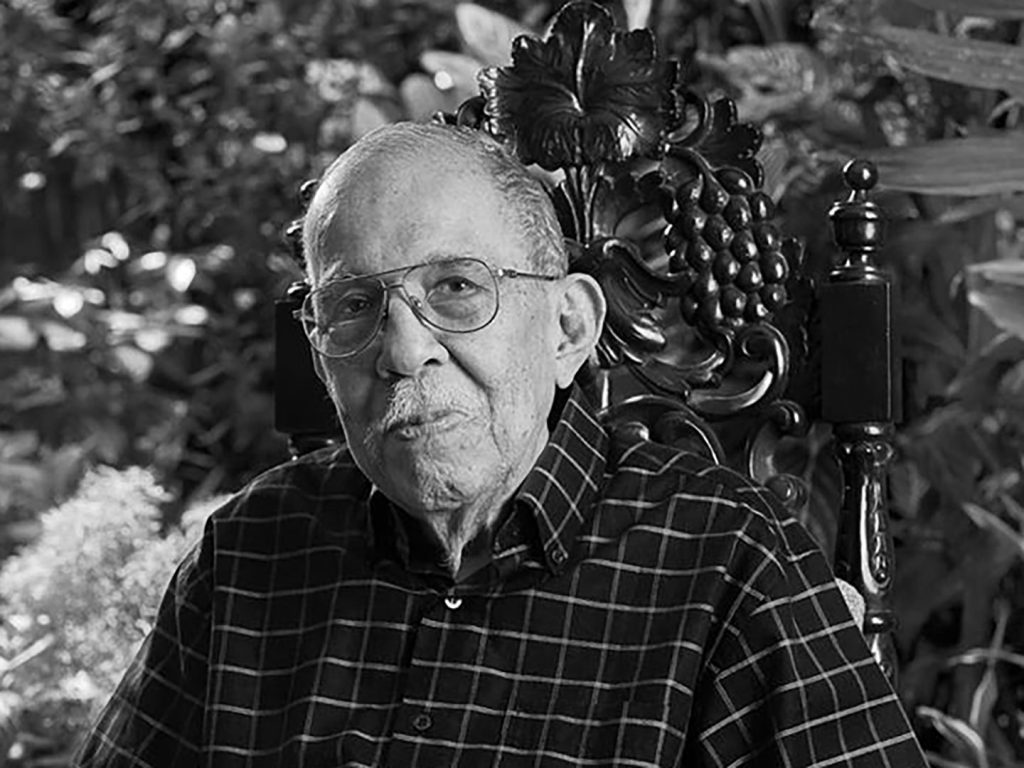
MANILA, PHILIPPINES — An artist’s legacy is an invaluable contribution to society and collective history – their art stands the test of time. For the late National Artist for Film Eddie Romero, his work lives on to be celebrated anew by generations and generations of audiences, more so now on his 100th birth anniversary.
The Cultural Center of the Philippines (CCP), in partnership with the Society of Filipino Archivists for Film (SOFIA) and in cooperation with ABS-CBN Sagip Pelikula, Cinema One, and the FPJ Archives, honors NA Eddie Romero’s unparalleled artistry through the CCP Cine Icons: Eddie Romero @ 100, a series of screenings of his films.
Here are the following cinematic gems that show why Eddie was one of the most revered filmmakers in the industry, regarded by both local and foreign directors, and why he was conferred the National Artist in 2003:
Aguila
This 1980 period drama film encompasses the history of the Philippines, told through the life story of Daniel Aguila. Touted as the “biggest event in local history” and “the biggest Filipino film ever made,” Aguila starred National Artist Fernando Poe Jr. in the titular role.
In the movie, the Aguila family gathers to celebrate their patriarch’s 88th birthday, but Daniel Aguila is nowhere to be seen. In fact, he has been missing for a decade. Suspecting that Daniel is in Mindanao, one of the sons goes on a journey to search for the missing father. His search leads him to uncover his father’s life through 80 years of personal and historical development.
The Cine Icons: Eddie Romero @ 100 kicked off with the special screening of Aguila last April 03 at the GSIS Theater.
Ganito Kami Noon, Paano Kayo Ngayon?
This 1976 period drama film narrates the adventures and misadventures of a naive peasant boy named Kulas, who wanders through the Philippine Revolution of 1896 to 1898 and the Philippine-American War of 1899 to 1901.
The second offering for the Cine Icons: Eddie Romero @100, Ganito Kami Noon, Paano Kayo Ngayon? was screened last May 22 at the UPFI Film Center. It will have a second premiere at the De La Salle University in Taft, Manila, on July 20.
This film is one of the inspirations for the opening salvo of the CCP Out-of-the-Box Series Season 2.
Kamakalawa
Premiered in 1981, the classic fantasy film explores the folklore of the prehistoric Philippines in an adventure of mortals in a world filled with gods and mythological creatures.
Catch Kamakalawa live on the silver screen this coming June 25 at the PUP Theater. This special event is free and open to the public. A talkback will follow after the film screening.
Hari sa Hari, Lahi sa Lahi
This 1987 Filipino-Chinese epic historical drama film is set in the 14th century, where a brewing friendship between the Chinese Emperor Yong Le and the King of Sulu, Paduka Pahala is forged upon the latter’s visit to China.
Banta ng Kahapon
Set against the backdrop of the 1969 congressional elections, this 1977 action film unravels the story of men as pawns in a milieu of political power — men best described as beholden only to amorality and the highest bidding politicos who pay their services.
Lost Batallion
A 1960 black-and-white film set in the Philippines during World War II is about a girl rescued from bandits by a guerrilla fighter.
The Raiders of the Lost Gulf
The 1963 war film recounts the story of a U.S. intelligence officer during World War II who was captured and tortured by Japanese soldiers occupying the small island of Sundao.
The Walls of Hell
This gritty, atmospheric 1964 war film dramatizes a chapter of World War II history in which 10,000 Japanese soldiers, fearing execution if they surrendered, disobeyed their own superiors’ orders and barricaded themselves in Intramuros along with a thousand or so unfortunate civilians.
Black Mama, White Mama
In this 1973 crime drama film, a black prostitute and a white revolutionary must form an uneasy alliance when they are busted out of prison and then pursued by guerrillas, bounty hunters, and the Army.
Savage Sisters
Set in 1974, the exploitation film tells the story of three women of three races who join the fundraising part of an island revolution.
To get the latest updates on future film screenings from CCP Cine Icons, follow the official CCP and CCP Film, Broadcast, and New Media Division social media accounts on Facebook, X, Instagram, TikTok, and YouTube.










